The capital of Germany, Berlin, is one of the most diverse, welcoming, and interesting cities in Europe. Being the largest city in Germany and the most populous city in the European Union, it has quite a lot to offer and is packed with exciting and unique things to explore. Berlin, frankly, is one of my favorite cities that I have been to and ever since I first visited it, I always fall in love with it a little bit more when coming back. The laid-back atmosphere, rich history, beautiful architecture, quirky cafes and boutiques, amazing food and coffee, and friendly people are just some of the reasons I love this city.
Even though I have been a couple of times already, I somehow always want to visit the famous spots all over again since most of them are popular for a reason. So let’s dive into all the places that are budget friendly but also worthwhile to visit in Berlin!
Brandenburg Gate
Probably the most iconic landmark that is not only a remarkable monument of Berlin but Germany overall, is the Brandenburg Gate. I remember so clearly the first time that I visited Berlin and saw the gate finally in real life – I was so astonished by the impressive 18th-century neoclassical architecture, its greatness, what history it holds as well as being the symbol of Germany’s unity.
The Brandenburg Gate was ordered to be built by the Prussian king Frederick William II in the same place where historical city gates were located. The gate was finished at the end of the 18th century and nowadays it’s located at the junction of Ebertstrasse and Unter den Linden, where from the other side sits the Pariser Platz which provides excellent sight of the gate.
The remarkable landmark is most definitely a must-visit place and even a great starting point to explore the city since around it are many public transport options, making this a perfect set off.

Reichstag
Another notable building that is located near Brandenburg Gate, is the Reichstag – a government building that holds the German Bundestag or German federal parliament. The Reichstag was finished in 1894 but during the 20th century, the building was greatly damaged by fire, later neglected, and again damaged during World War II. In 1961 some renovation works took place in the Reichstag building but only in 1999 it was finished and the government met for the first time there. Nowadays the Reichstag is a very popular tourist destination where you can feel the history while political decisions take place at the same time, enjoy art shows, and have a meal at the roof restaurant with amazing views.
One of the best things to not miss while exploring the Reichstag building is the dome and roof terrace. There you can walk to the top of the dome and be amazed by the views surrounding the government building. Visiting the dome is free of charge for all visitors but advanced reservations are required. You can find the link to reserve your spot for the dome and roof terrace here: https://visite.bundestag.de/BAPWeb/pages/createBookingRequest/viewBasicInformation.jsf?lang=en

Memorial to the Murdered Jews of Europe
One of the most heartbreaking places in Berlin certainly is the memorial to the victims of the Holocaust during World War II when approximately 6 million Jewish people were killed. Close to the Brandenburg Gate, you will find 2711 concrete stelae in different sizes that create an unusual touch to a memorial – you can freely walk along the structures while also having the time to contemplate the history and the very horrible events. Created by architect Peter Eisenman and opened in 2005, the memorial is an unmissable stop while exploring Berlin.
While spending some time at the memorial, make sure to also visit the underground Place of Information that holds details of the victims along with photographs, letters, diary entries, and film footage. The entry to the exhibition center is free of cost but audio guides cost 4 Euros. For more information, you can visit the memorial’s official website here: https://www.stiftung-denkmal.de/en/


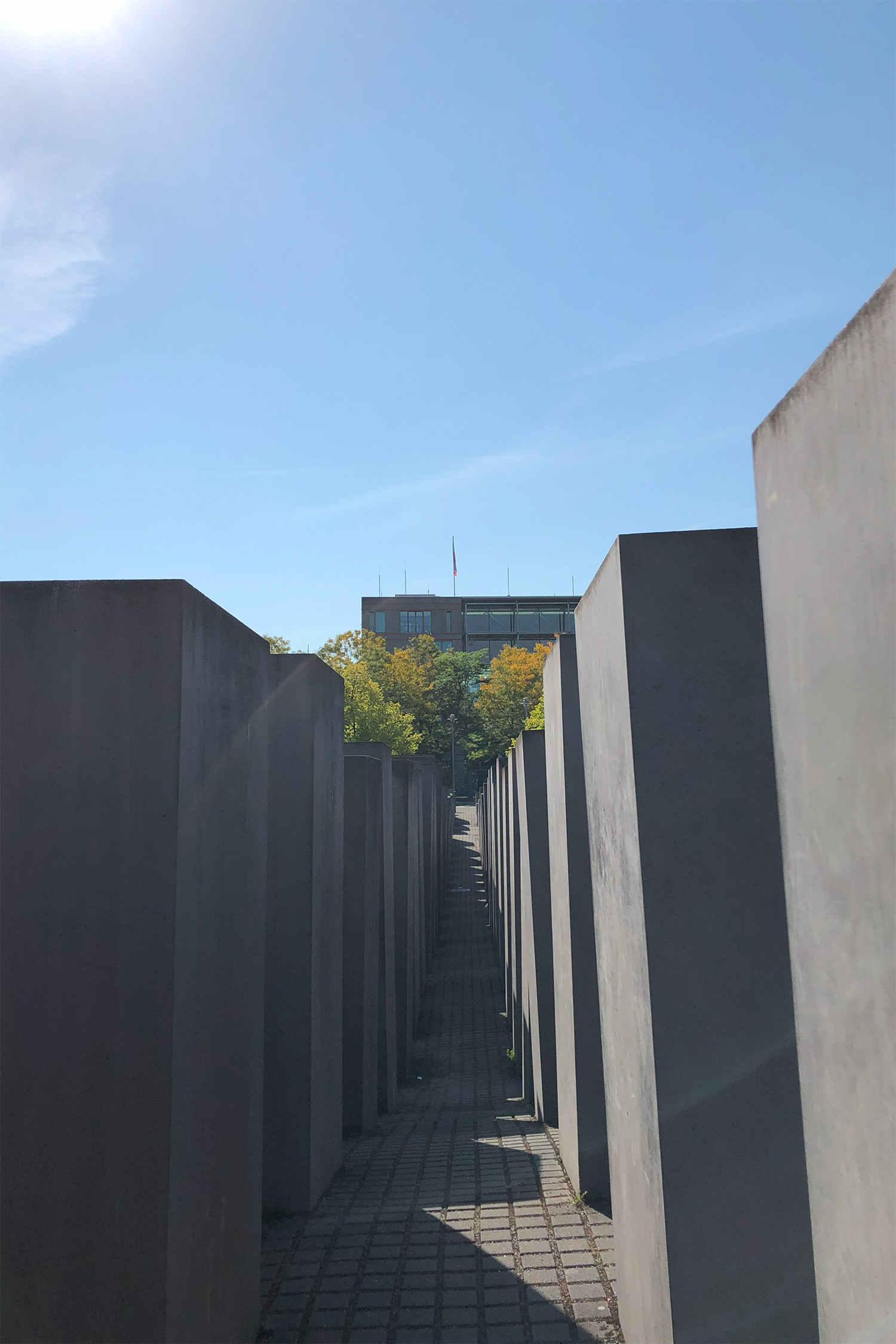
Potsdamer Platz
Close to the memorial, you will find the vibrant Potsdamer Platz which hosts plenty of shopping, food, and entertainment options. Historically, called after the city of Potsdam, in the 20th century the square developed into the most active traffic intersection in Europe with the first Europe’s traffic light being installed in 1924. During World War II, the area was destroyed and got its modern look only in the late 1990s and 2000s. When the Berlin Wall was constructed in 1961, the Potsdamer Platz was left divided into two parts and there’s still a part of the wall placed at the square that makes you think of the past while enjoying the modern atmosphere of the place. Whilst exploring the Potsdamer Platz, make sure to check out next to it the Leipziger Platz where you will find the Spy Museum and Mall of Berlin shopping center.
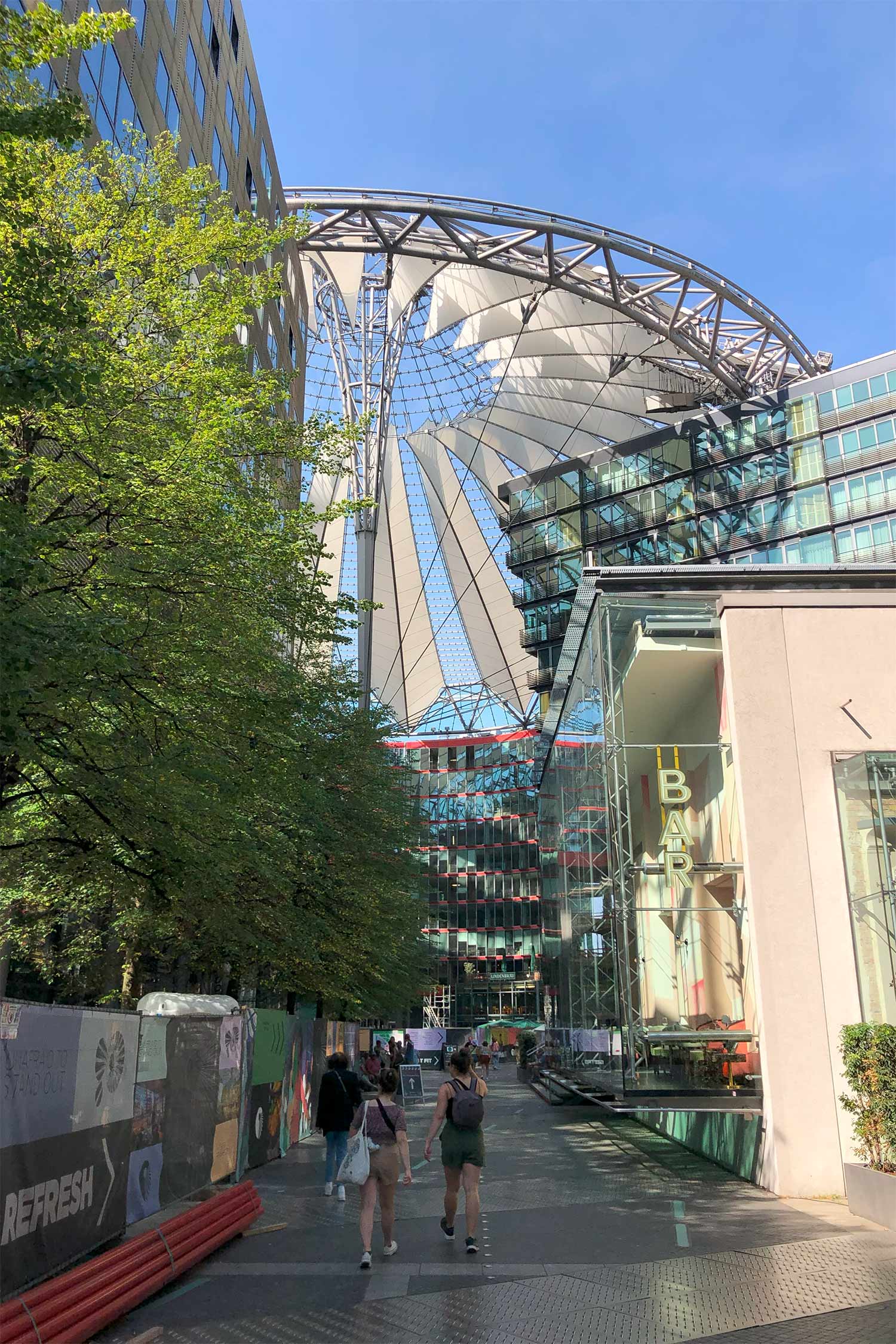

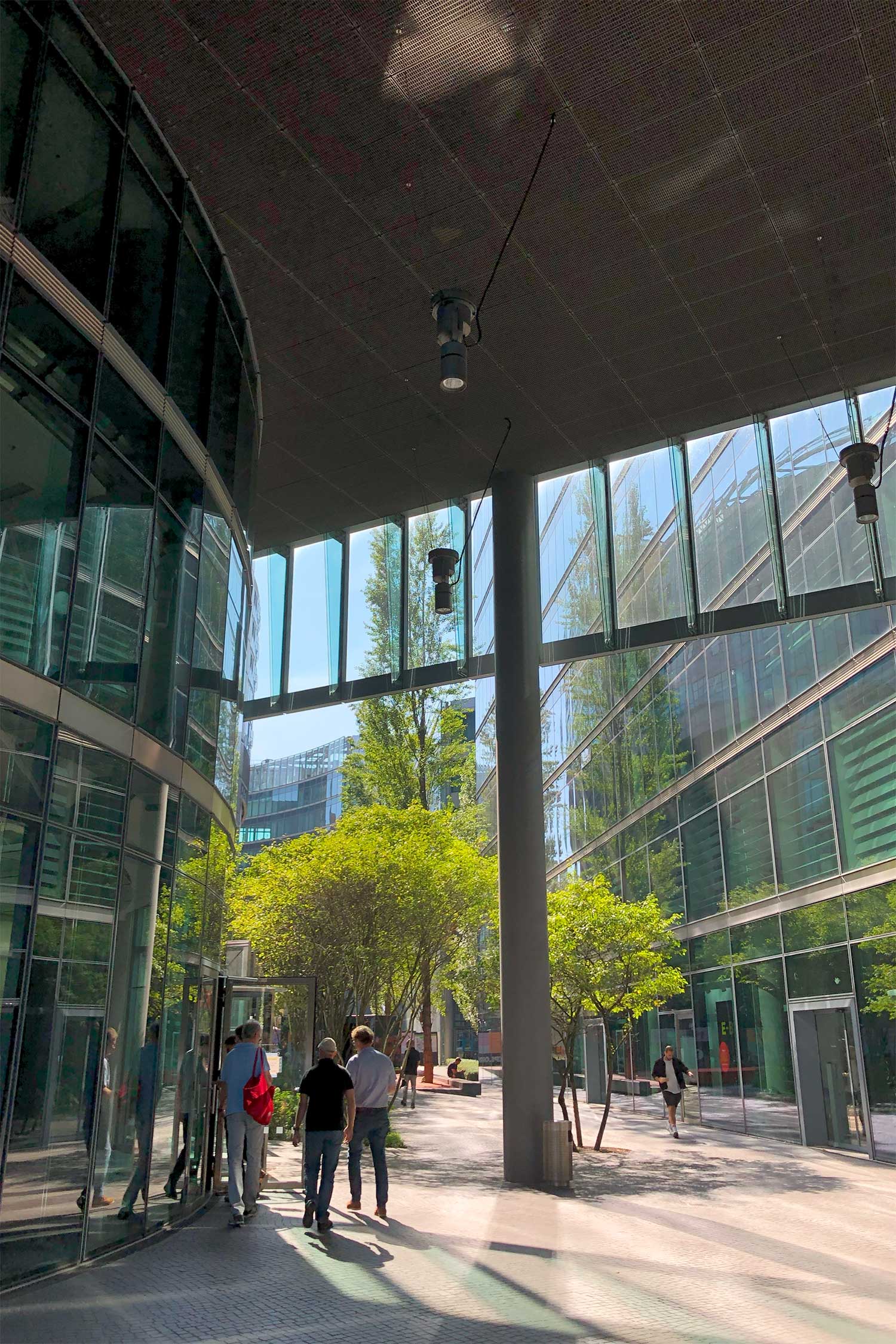
Futurium
If you are keen on visiting museums but are on a budget, I highly recommend the Futurium which is not only for free but absolutely amazing! The museum covers many topics such as environment, health, technologies, ideas, and people’s needs but showcases them in unique concepts and innovations with the constant question in mind – what our future will look like?
The museum is truly fascinating and makes you think more creatively and openly. We spent a few hours wandering through the expositions and could have spent even more if not for the sake of other places that we planned to visit in the city. I highly recommend Futurium if you are curious about our future, and want to look at it from technology, nature, and human perspective and most of all, admire all the unique and creative ideas that you can find all over the museum. For more information, check the museum’s official website here: https://futurium.de/en



Tiergarten
While visiting the Brandenburg Gate, Reichstag, or the Potsdamer Platz, you cannot miss the beautiful and full of life Tiergarten – Berlin’s most popular park and one of the largest parks in Germany. Historically the park was a royal hunting ground and in the 17th century became a park to the general public. Sadly, during World War II, the park suffered deforestation since locals faced a deficit in the coil but thankfully from 1949, the park was replanted and now is one of the best destinations in Berlin to soak up nature and some greenery.
In the park, people enjoy doing sports activities, walking their dogs, or just resting and having a picnic. If you are a classical music lover, make sure to visit the Beethoven-Haydn-Mozart Memorial as a tribute to the three great classical composers that you can find in a calm corner of the charming park.
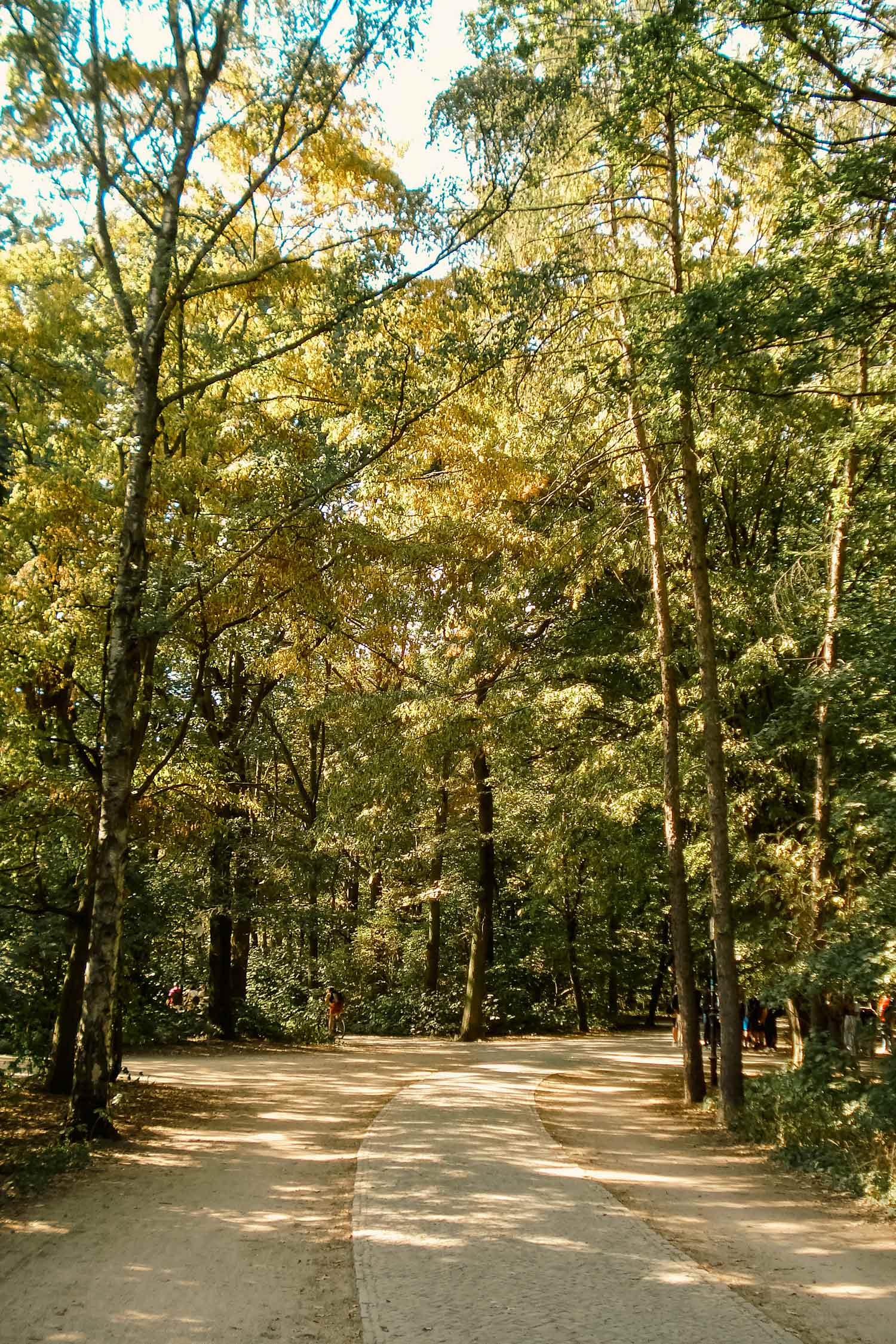


Victory Column
Victory Column, one of the most prominent monuments in Berlin, certainly catches your eye from afar. Located by the Tiergarten Park, the column was designed by Johann Heinrich Strack, and the sculpture at the top of it, Goddess Victoria, was designed by Friedrich Drake. At the time it was constructed, the monument was created to celebrate Germany’s many victories over France, Denmark and Austria in the years between 1864 and 1871. Being 67 meters in height, the Victory Column provides great views over the city where you can take stairs up to a viewing point for a 4 Euro entrance fee.
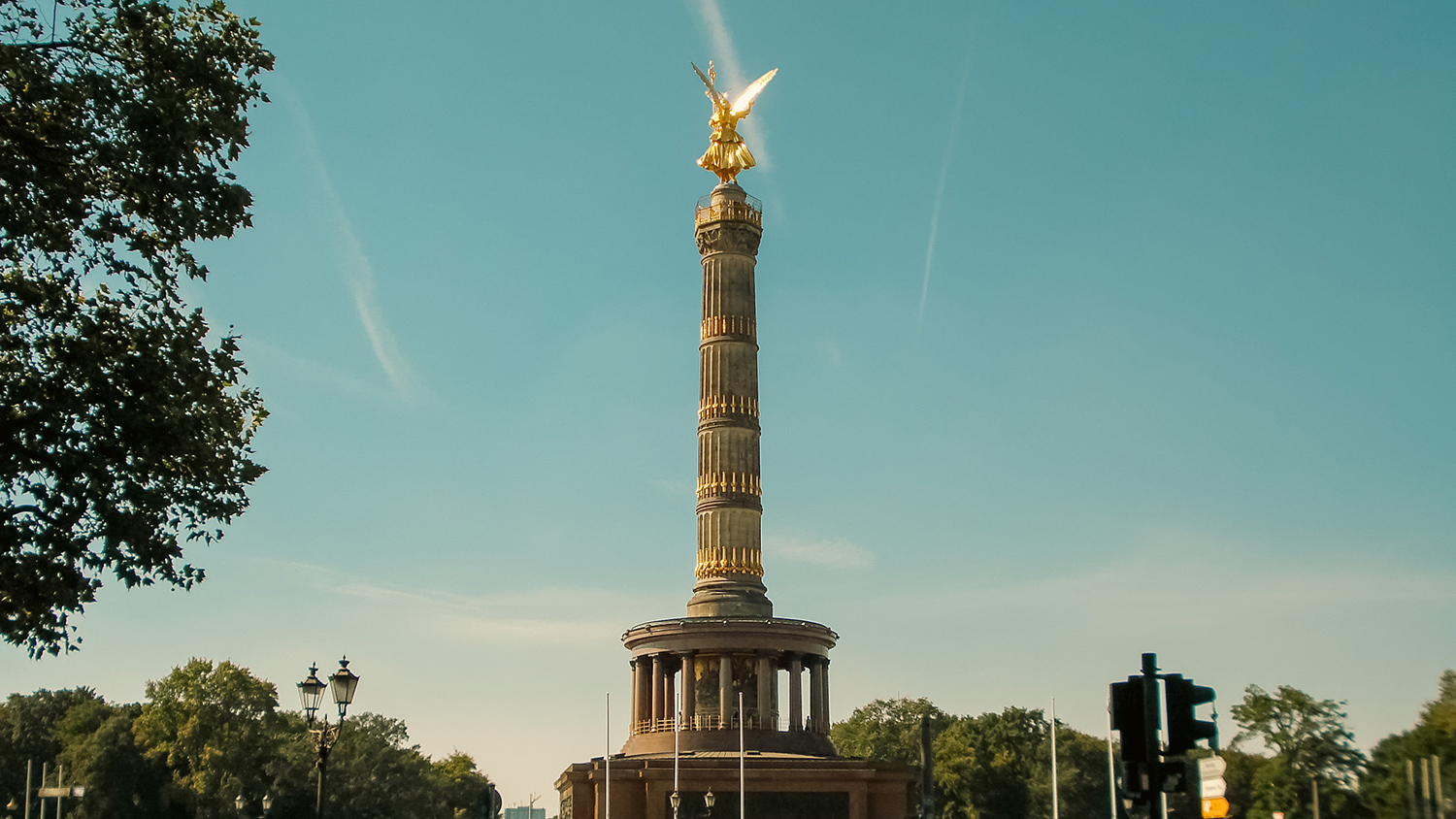
Kaiser Wilhelm Memorial Church and the Kurfürstendamm street
The Kaiser Wilhelm Memorial Church is a devastating proof of war consequences. The original Protestant church, built in the 1890s, was damaged during bombing in 1943. Nowadays, the spire that was damaged has been preserved and what has been left of the church, turned into a war memorial hall. However, during 1959 and 1963 a new church and chapel was built by the old one that is also open to visitors for free and provides unique mosaic displays.
Every day at specific times you can join public church tours where you will be presented with the memorial hall in the old church and also a tour through the new one. The tour is free of cost and requires no registration. The church also hosts prayers and many events such as music performances and special tours. If you are in a festive mood, during Christmas time around the church, you can also enjoy a traditional German Christmas market and try out some local foods and drinks.
While visiting the Kaiser Wilhelm Memorial Church, you cannot miss Kurfürstendamm – the famous and beloved boulevard. The street is lined up with not only many different designer shops but also department stores, restaurants, cafes, and bars that come to life in the evenings, painting the street lively and irresistible. It is considered one of the most famous shopping streets in the world that stretches about 3,5 kilometers long and is the perfect place to go for a walk or, window-shop, admire the astounding architecture, and feel like living in a movie.



Checkpoint Charlie
Checkpoint Charlie is considered the symbol of the Cold War and the Berlin Wall, being the most popular crossing point between East Berlin and West Berlin. During that period, the checkpoint was controlled by American soldiers and only a few could cross the border. Nowadays you can see a huge image of a soldier at the location and barracks that are a replica of the ones that were in the past. Right by the checkpoint you will also find the Wall Museum where you can learn about the escape cases that happened during the Berlin Wall’s period as well as see some escape objects. The Checkpoint Charlie is available for all without any cost since it’s located in the middle of Friedrichstrasse, one of the largest traffic lines in the city.
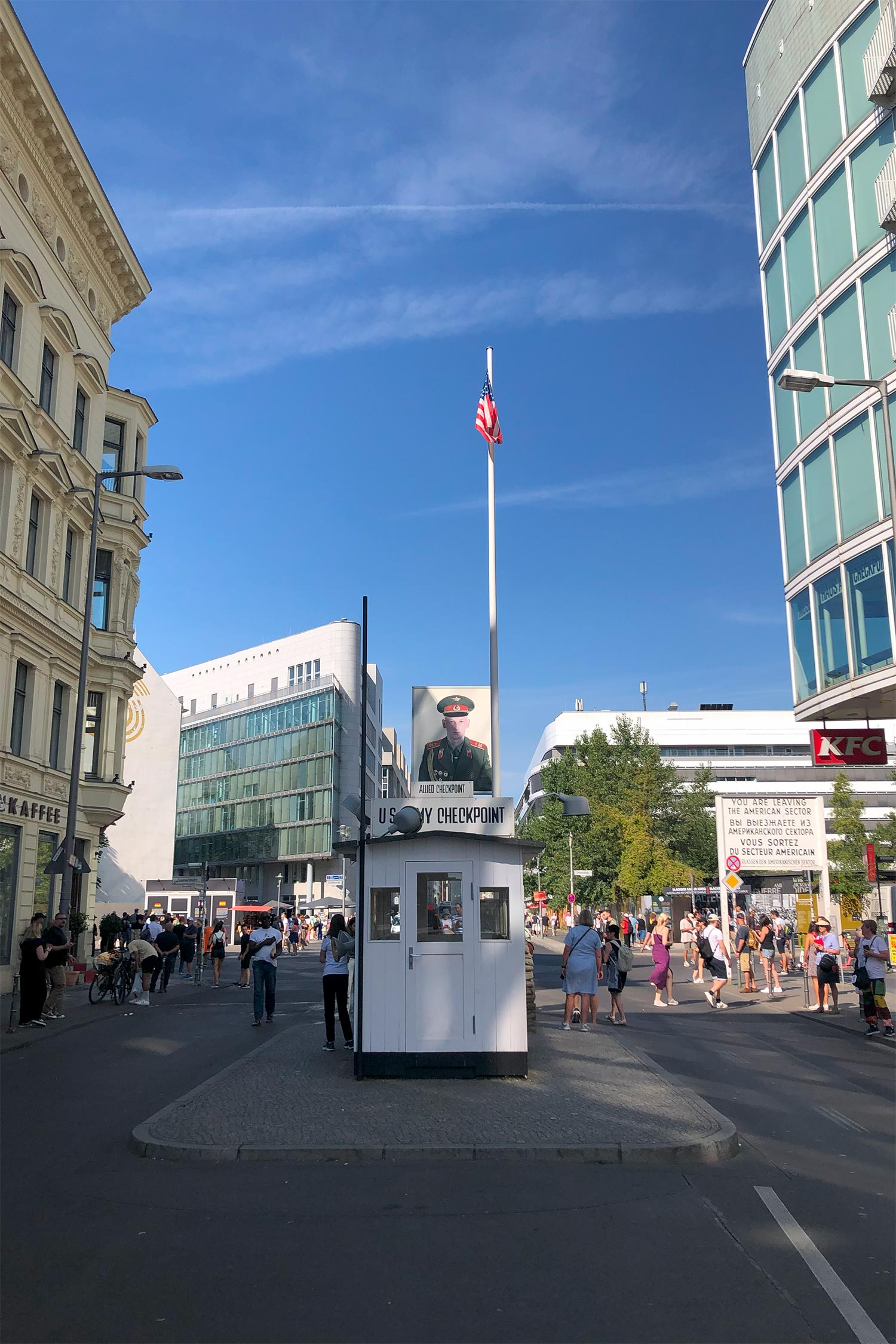


Viktoriapark
I believe Viktoriapark should be more recognized for the beauty it holds. Located in the Kreuzberg district of Berlin, it provides the highest rising point of the city with a stunning waterfall which is as very unique experience in Berlin and that you can enjoy all along its way and even have a refreshing rest right by the water. The name of the park was given after Emperor Frederick’s III wife Victoria who was the daughter of the famed Queen Victoria.
At the top of the hill, lies the National Monument that was built and dedicated in the early 19th century to King Friedrich Wilhelm III which symbolizes victory over Napoleon in the Napoleonic Wars and freeing Europe from French rule. Nowadays the park is the perfect place to enjoy a walk through the hilly greenery in the romantic atmosphere by the waterfall, overlooking the rest of the city. Viktoriapark was a pleasant surprise to me since I hadn’t heard about it a lot but I was very impressed by the beauty and uniqueness of the place.



Berlin State Library
A hidden gem of Berlin, right near the Brandenburg Gate, is the Berlin State Library building, or rather the garden that you can find in front of the entrance at the Unter den Linden Street. The library is considered one of the largest ones in Europe and is a major research site that belongs to the Prussian Cultural Heritage Foundation. There you can find some truly unique examples of history such as manuscripts from composers like W.A. Mozart, J.S. Bach, and Ludwig van Beethoven as well as an autograph collection of Goethe. The Neo-Baroque building is worth admiring not only because of the architectural beauty but also the Wilhelmine style court that truly is spectacular with the fountain located in the middle, surrounded by benches to relax at, and the building’s walls covered in vines that create a magical look to the court area.



Memorial to May 10, 1933, Nazi Book Burning
Not far from the Berlin State Library, you will find Bebelplatz, which is known as the place where Nazi book burnings took place on May 10, 1933. In the square, created by sculptor Micha Ullman, is a memorial called Library consisting of a glass floor that stretches deep in the ground and has empty bookshelves, symbolizing the losses of about 20000 books that were burned that day and the stories that were forbidden. The memorial is freely accessible in the middle of the square but I would recommend visiting it when it’s a bit darker outside to have a better look at the bookshelves underground where at night it’s illuminated by light.
The Palace Bridge (Schlossbrücke)
Marking the eastern end of the famous Unter den Linden boulevard, Schlossbrücke leads across the Spree River and offers exquisite sights to the surrounding area. Built between 1821 and 1824, it is one of the most beautiful bridges in Berlin, holding historical elements and decorations. The marble figures adorning the bridge were constructed by architect Karl Friedrich Schinkel and represent different heroes and Greek mythological goddesses. The Palace Bridge is an unmissable stop while exploring the city and is definitely worth the time.

Lustgarten and Berlin Cathedral
Another iconic landmark of the city is the Berlin Cathedral which is clearly visible from the Palace Bridge. Located on Museum Island, it has spectacular architecture that dazzles both inside and outside. Built between 1894 and 1905, it has Renaissance and Neo-Baroque style architecture and is considered one of the most beautiful churches in Berlin.
The church is open to visitors where one entrance ticket costs 10 Euros and you can purchase the tickets beforehand online here: https://www.berlinerdom.de/tickets. When visiting the church, don’t forget to visit the dome that offers breathtaking views of Berlin that you can reach by climbing up 270 steps. After all the exploring, you can enjoy coffee and snacks at the cafe that is located in the basement of the building and in warmer weather have seats outside by the river as well. The cathedral also hosts many concerts such as organ music and the cathedral’s choir performances.
Just outside the Berlin Cathedral, you will find Lustgarten, a park that sits at the Museum Island between the cathedral and Altes Museum that displays Roman and Greek relics. The park is an ideal place to admire the buildings from afar, enjoy the fountain, sit and relax in the grass or on the benches, and adore the city’s beauty.


Museum Island
A unique complex in the middle of the city is Museum Island, also a part of the UNESCO World Heritage Site. Considered one of the most marvelous museum complexes in the whole of Europe, it truly deserves all the admiration for having such exquisite architecture and museums with excellent exhibitions.
The island accommodates 5 museums which are the Altes Museum (Old Museum), the oldest museum in Berlin that exhibits Greek and Roman antiques, the New Museum, an archeological museum with collections of Egyptian relics and much more, the Old National Gallery that has a collection of Romantic, Impressionist and Modernist era art, the Pergamon Museum that has ancient Roman and Greek art collections but is closed till 2027. The Bode Museum at the peak of the island holds art from the Byzantine period, Renaissance, and Baroque sculptures from Europe. Finally, you can also find the James Simon Gallery where you can see some special exhibitions and also find information about all the museums on the island.
Museum Island is the perfect place for any museum lover, history, and art admirer that is in the middle of magnificent architecture and beautiful greenery.
Nicholas Quarter
For a different atmosphere of the city, I highly recommend visiting Nikolaiviertel or Nicholas Quarter – the historical center of Berlin. There you will find narrow streets, historical buildings, and the city’s oldest church, St. Nicholas Church. Aside from that, make sure to visit the Ephraim-Palais, an 18th-century Rococo-style building that houses exhibitions on the city’s culture and history. Nicholas Quarter is popular for its history but also the many amazing cafes and restaurants overlooking the place and providing delicious and memorable meals and drinks. In this area you can also encounter many activities and festivals such as historic dances, light shows and so much more. For information on any upcoming events, check the official website here: https://berlin-nikolaiviertel.com/?lang=en. Nicholas Quarter turned out to be one of my favorite places in Berlin since the contrast with the dynamic city just a couple of streets away is mesmerizing.
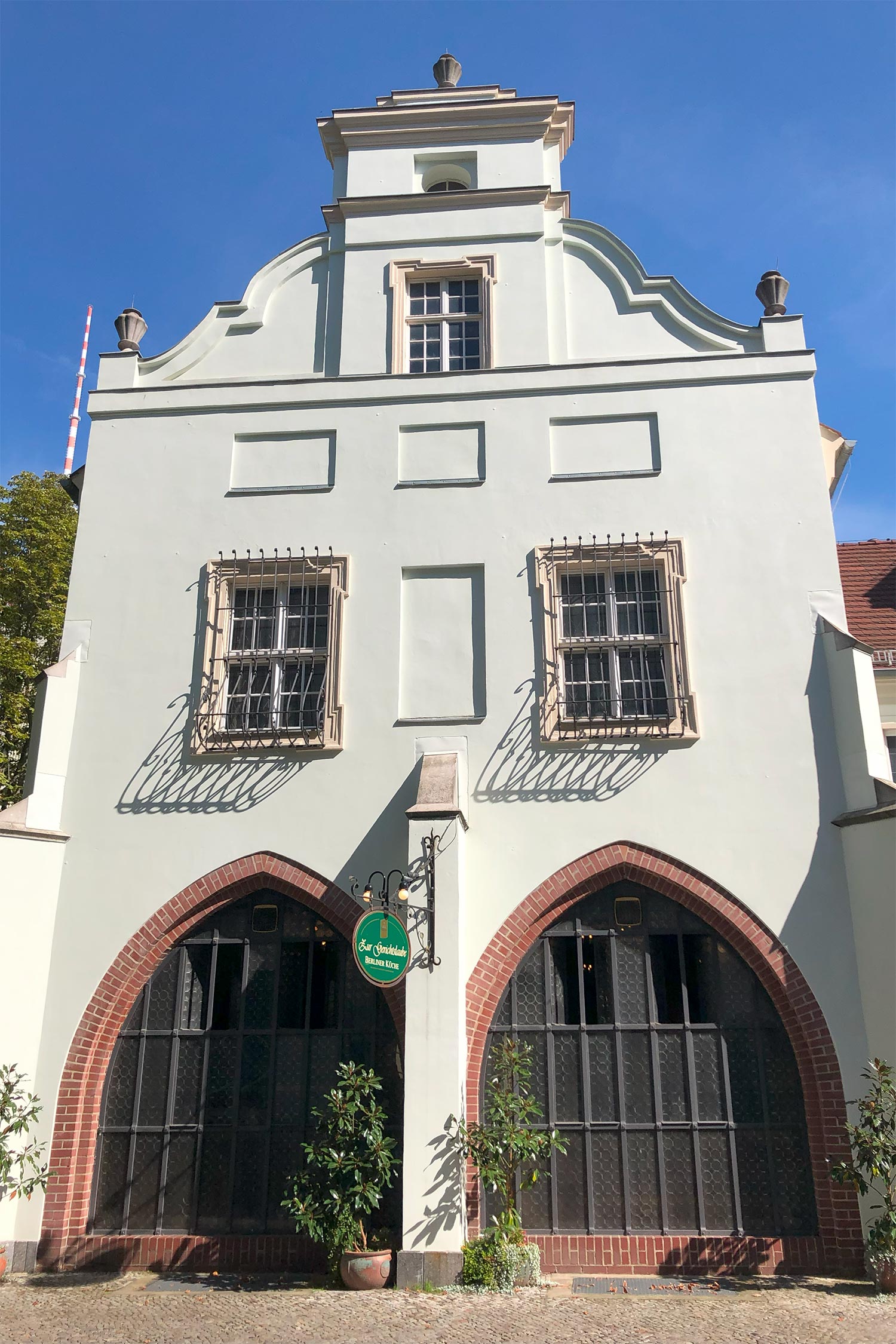
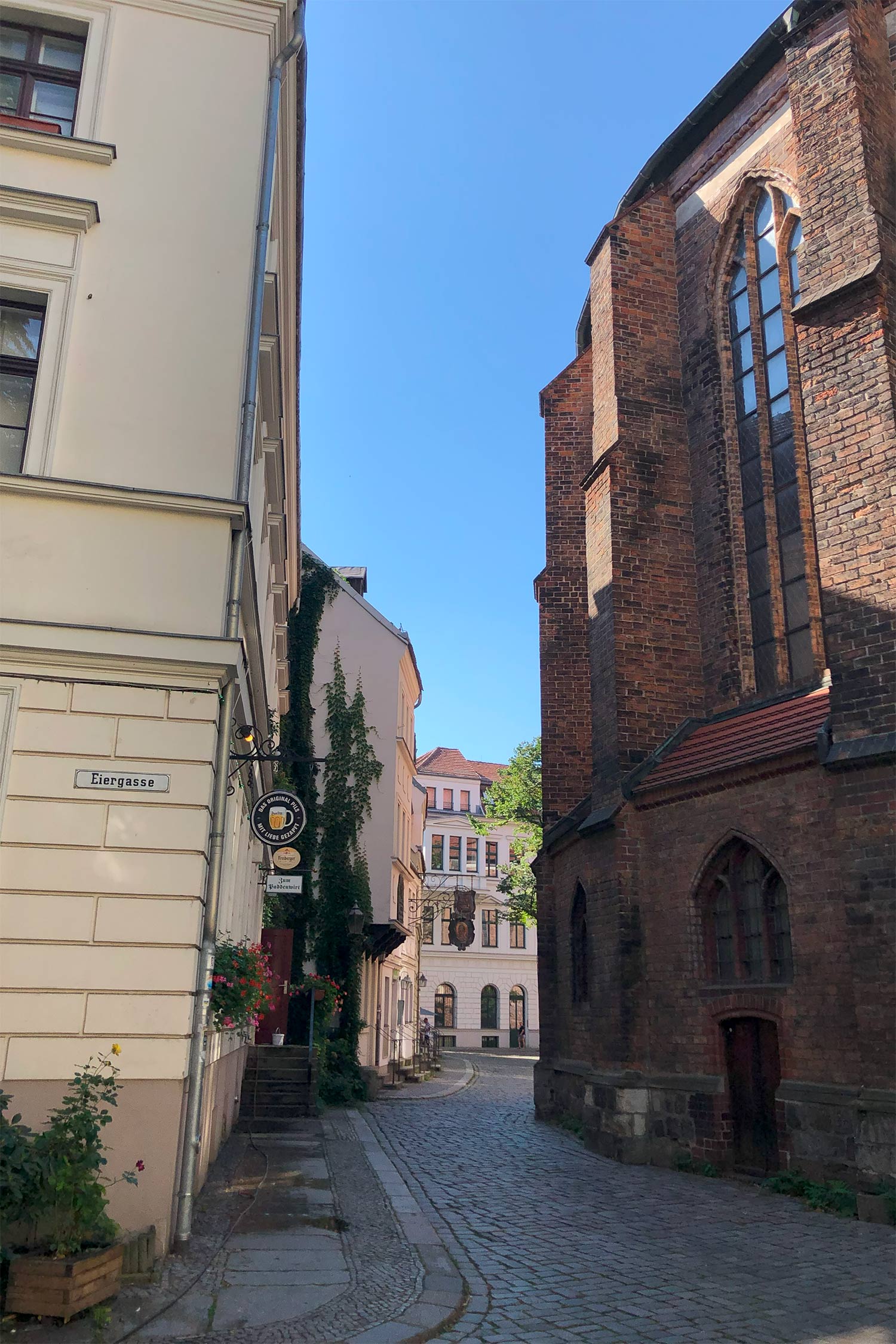

Berliner Fernsehturm
The iconic Television Tower of Berlin has become a symbol of the city and for a reason – it is the tallest structure in Germany that has a very impressive look to it. Located in Alexanderplatz, the tower was built between 1964 and 1969, and in height is up to 368 meters, making it the third largest structure in the European Union. The Television Tower is not only impressive from the exterior but also provides outstanding views all around the city from the observation deck and the restaurant that also rotates twice every hour, making you experience all of the city while sitting by your table and enjoying delicious and unique Berlin foods.
At the Television Tower, you can also try virtual reality where you can learn about the history of the tower’s construction or take a journey through 9 centuries of Berlin’s history. If you are looking to visit only the observation deck, the tickets cost 22,50 Euros but a bundle ticket that consists of the observation deck and the two virtual reality experiences – 29,50. For more information on tickets and reservations, check the official website here: https://tv-turm.de/en/.
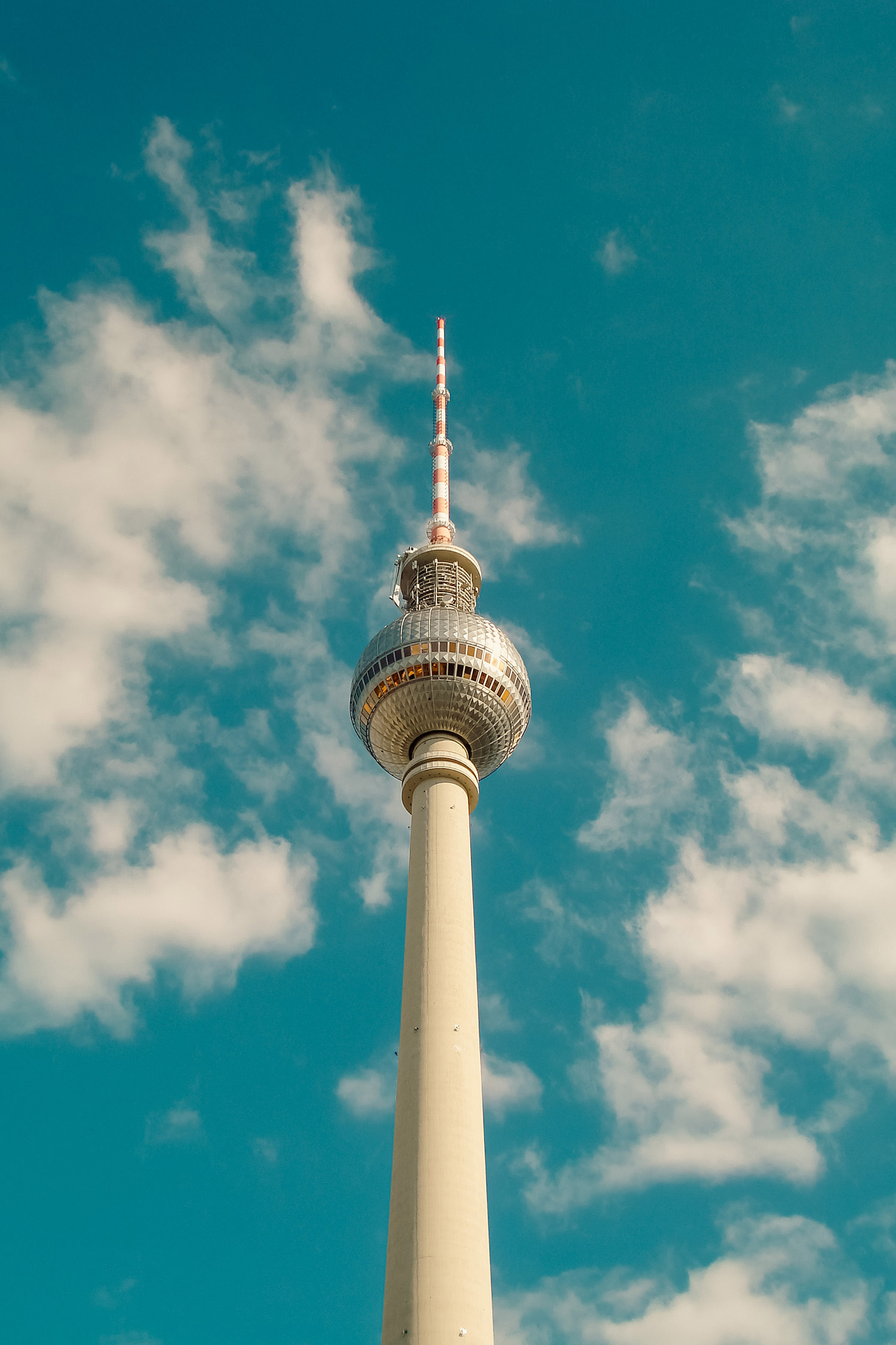

Alexanderplatz
As one of the main squares in the city, Alexanderplatz truly is a vibrant part of Berlin that is filled with people no matter the time of the day. Right by the Television Tower, the square offers a wide variety of shopping options as well as a great place to meet others and grab a quick meal at the many food options around the area. Historically, Alexanderplatz was used as a military parade ground until the middle of the 19th century but now it’s a modern square that is still flourishing and having renovations. The square is surrounded by many public transport options so whether you are traveling by metro or tram, you cannot miss the famous square.
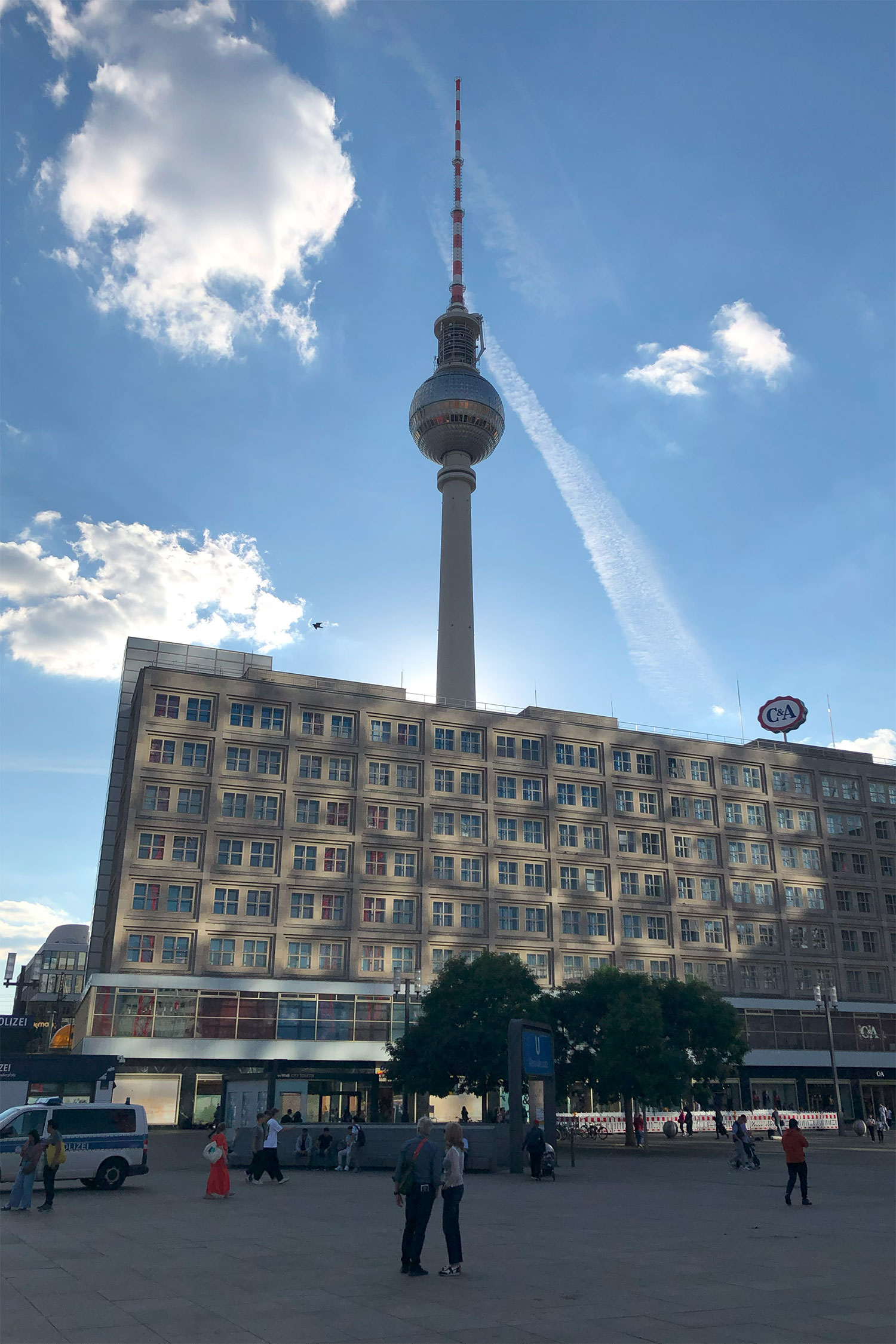

Rosenthaler Str. 39 quarter
Close to Alexanderplatz, lies a very quirky and different place – courtyards filled with interesting cafes, boutiques, bars, galleries, and museums on a graffiti and fascinating street art background with narrow streets that take you back to 20th century Berlin. Back in the 19th century, the complex was a factory and residential building and the remnants from that time are still detectable today, making the place that unique.
There you will find ILL Galleries, Neurotitan Shop and Gallery that displays modern art, the Kino Central movie theater, Monsterkabinett art gallery displaying mechanical monsters and street art, Museum Blindenwerkstatt Otto Weidt history museum about Otto Weidt who protected Jewish workers from persecution and also Anne Frank Center. This place took me by surprise with the completely eccentric energy and style, and I highly recommend anyone to visit this place to experience it as well.



Holzmarkt 25 and teledisko
Holzmarkt 25 is the perfect place to enjoy a warm, sunny day by the river Spree surrounded by different kinds of plants, street art, quirky seating areas and cafes, bars, and so much more. This urbanistic yet filled with greenery spot is the perfect place to have a nice rest from the dynamic city. In the area, you can also find multiple restaurants, a theater, a techno club, and one of the most fun experiences in Berlin – teledisko.
The small disco club that is placed in a phone booth is such a fun experience not only because it’s the smallest disco in the world but also how accessible and affordable it is. Outside the small booth, you can select a song you want to listen to, choose if you want pictures and a video to be taken, and pay with coins directly there. One song costs 2 Euros and the booth can hold approximately 3 or 4 people. There are overall four teledisko booths in Berlin and this was certainly a top experience for us and high on the list of places to visit in Berlin.
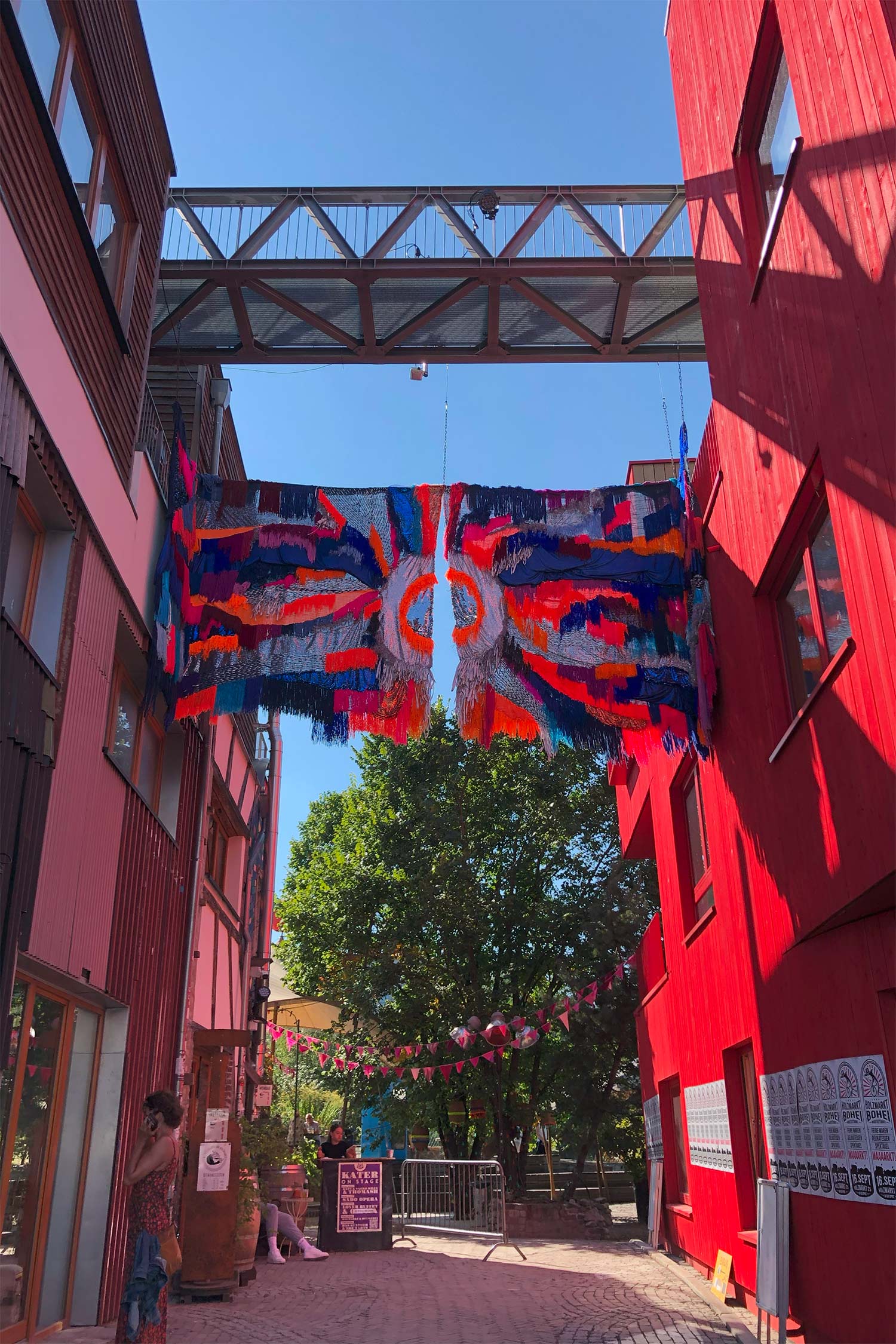
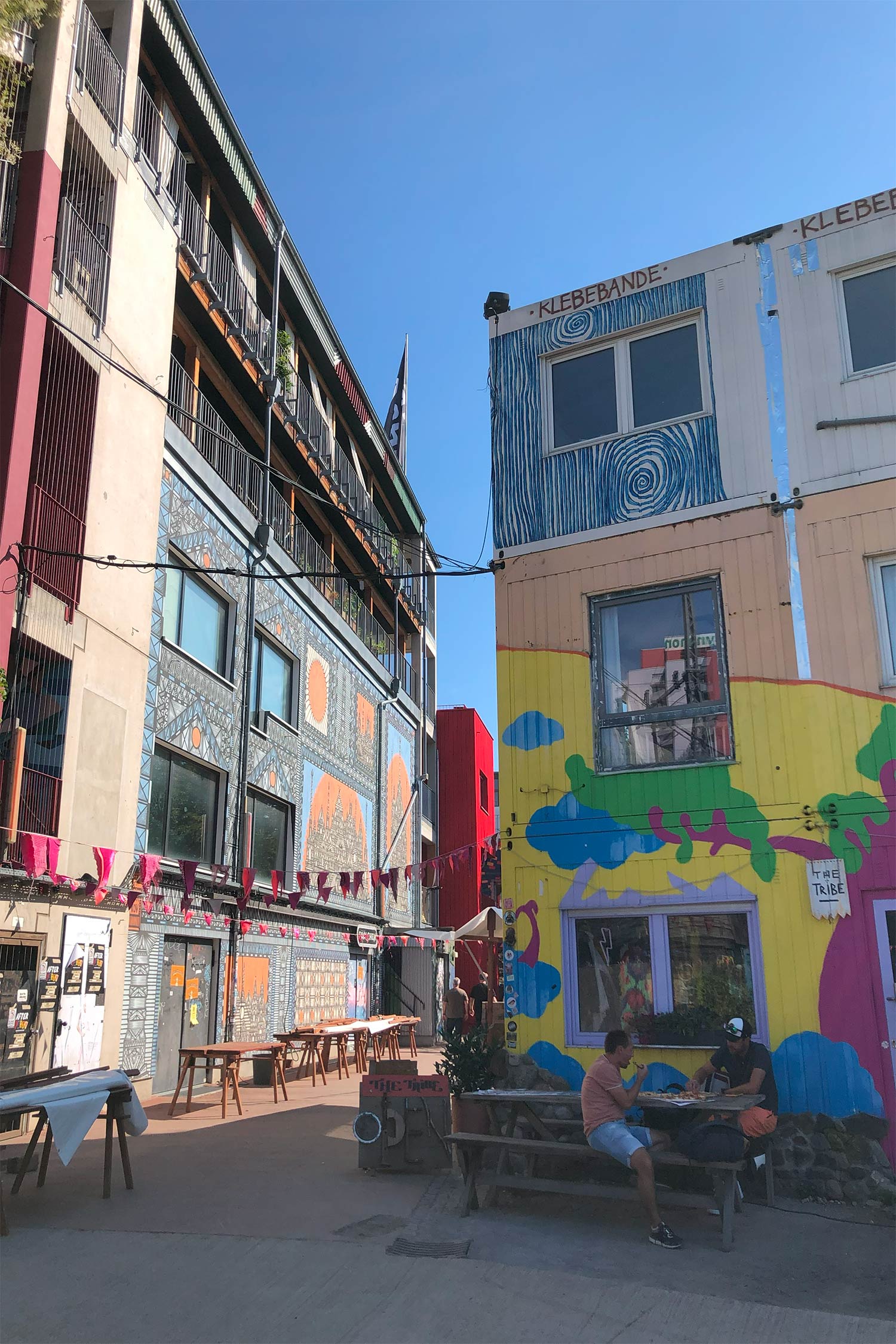
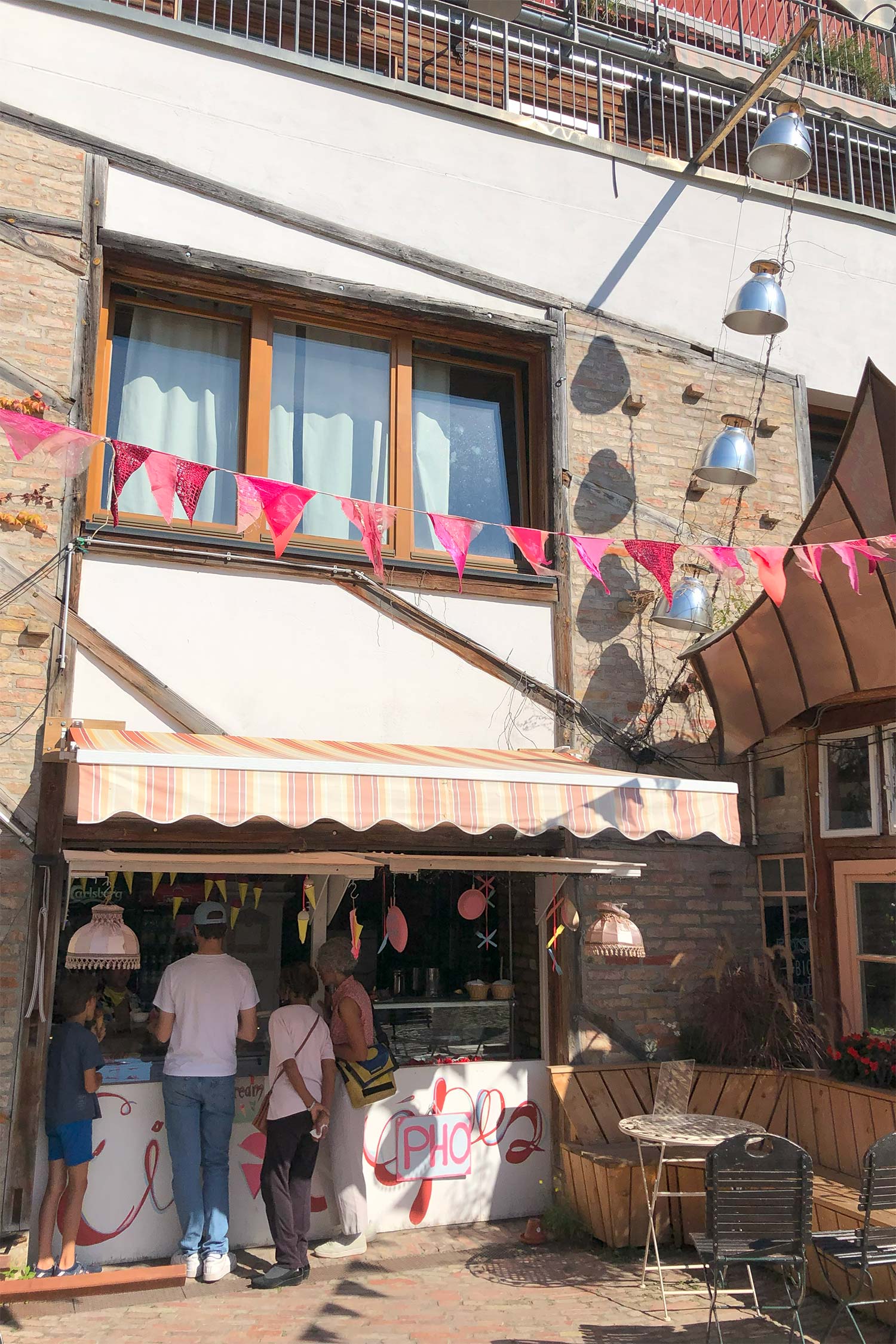
East Side Gallery
When visiting Berlin, the East Side Gallery definitely should be on your list of places to visit in the city. Where once it was a wall that divided Berlin into two parts, now it’s the longest surviving part of the wall and the largest open-air gallery in the world. After the German reunification, the wall was painted by 118 artists from 21 different countries, creating a colorful statement and monument to freedom and hope for a better future. The extensive 1.3 km wall offers truly unique paintings and makes you reflect on the past and the current times.


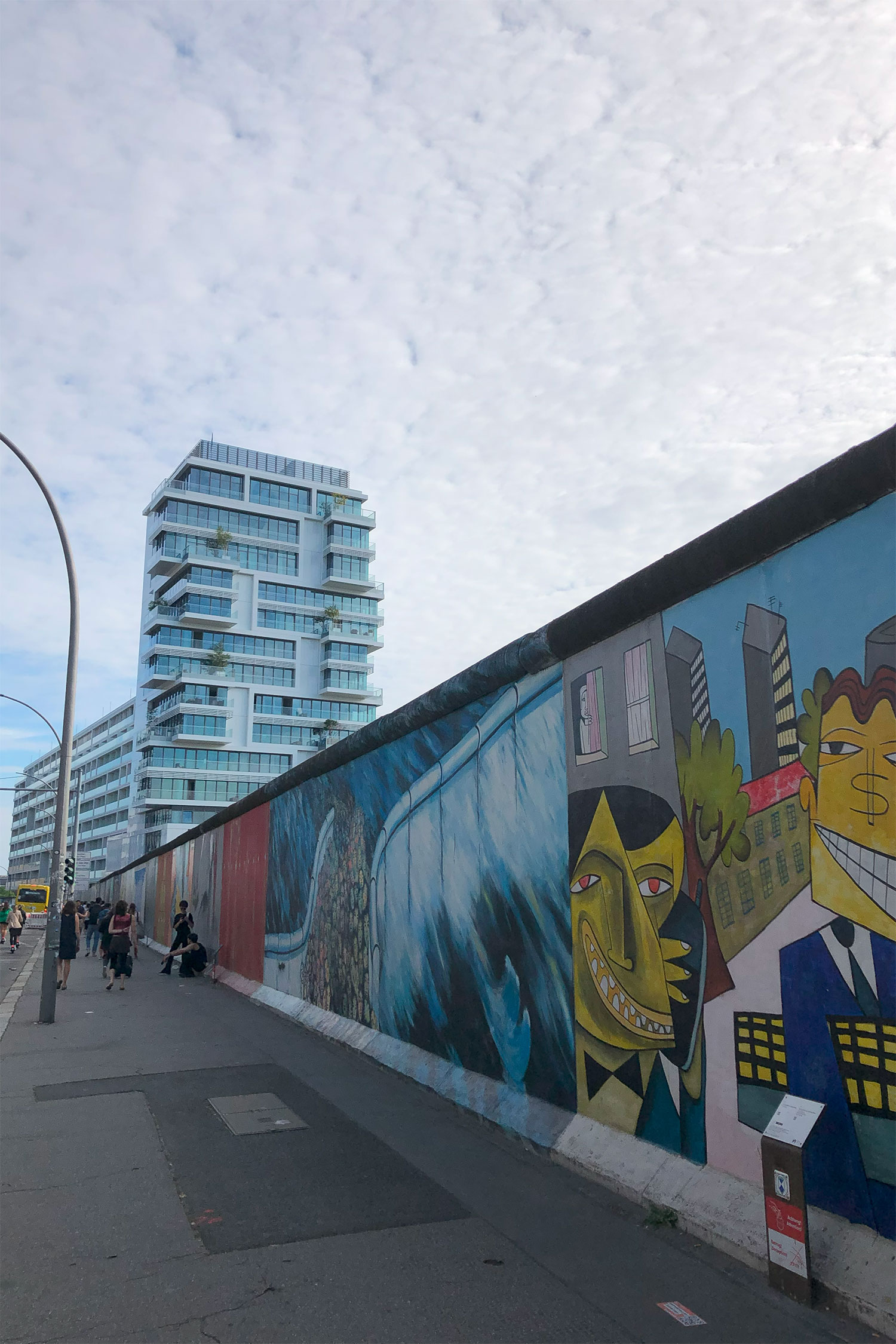
Prenzlauer Berg
My absolute favorite area in Berlin that I visit every time I come to the city is the Prenzlauer Berg. Located in northeast Berlin, it’s such a lively and diverse district with charming streets filled with beautiful architecture, trendy boutiques and vintage shops, cool cafes and bars, and with the bohemian atmosphere, it’s truly an amazing place. Once Prenzlauer Berg was considered a bit neglected but in recent years the area has faced redevelopment and become a highly admired part of the city that attracts many locals and tourists. I highly recommend going for a walk through the Prenzlauer Berg, admiring the many unique shops and enjoying a cup of coffee while sitting outside, it’s truly a wonderful experience.
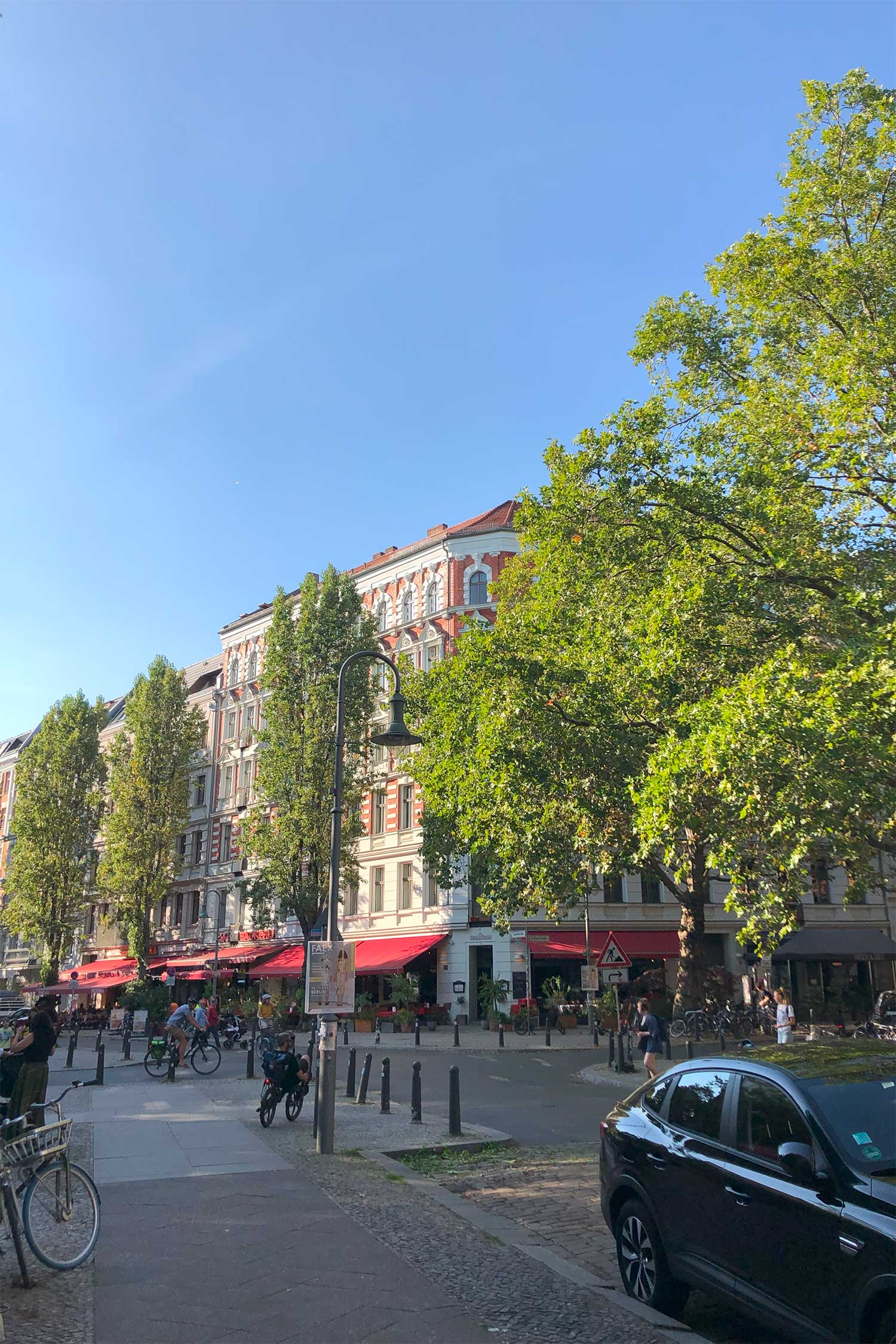


Mauerpark
In the Prenzlauer Berg, you cannot miss the most laid-back park that I have visited in Berlin – the Mauerpark. It is located at a place where the Berlin Wall was separating East and West Berlin and became a park only in 1994. Now you can catch sun rays while laying in the grass, go for a jog, hang out with friends, attend events held in the park, and most of all, go to the flea market on Sundays to browse through some unique pieces both used and new from different local and foreign artists. Mauerpark is the place to feel free and have a relaxing time away from the city.



Some cafes that I enjoyed
Berlin is filled with amazing cafes, restaurants, and bars, it’s impossible to visit every place that promises to be excellent. As a coffee lover, I was beyond happy to find cafes with delicious coffee and tasty food. Some of my favorites from my last trip to the city are Eden cafe, which has very tasty coffee and the best pastries, especially cinnamon buns, combined with the artistic and laid back atmosphere, it was my favorite. Cafe Paula has a lovely vintage charm to it and while the coffee was great, the wide variety of cakes and pies was the best part.
A very popular spot has become Cinnamood bakery that you can find in the city center and has cinnamon buns with different toppings. While this might be a bit pricier treat, the buns are warm, fresh, and very tasty. A new place that we found was Catnip Cafe which had amazing ice coffee and cake, and was promised to have cats as well. When we visited, they had just recently opened the place so we didn’t see any cats but at the end of 2023, there should be a lot of furry friends as well.
Shakespeare and Sons bookstore and cafe is very popular and rarely has free spaces to sit but it’s perfect to drink coffee, try their famous bagels, and read. In the cafe, you can also find many great books in English which is perfect for travelers who love to read.

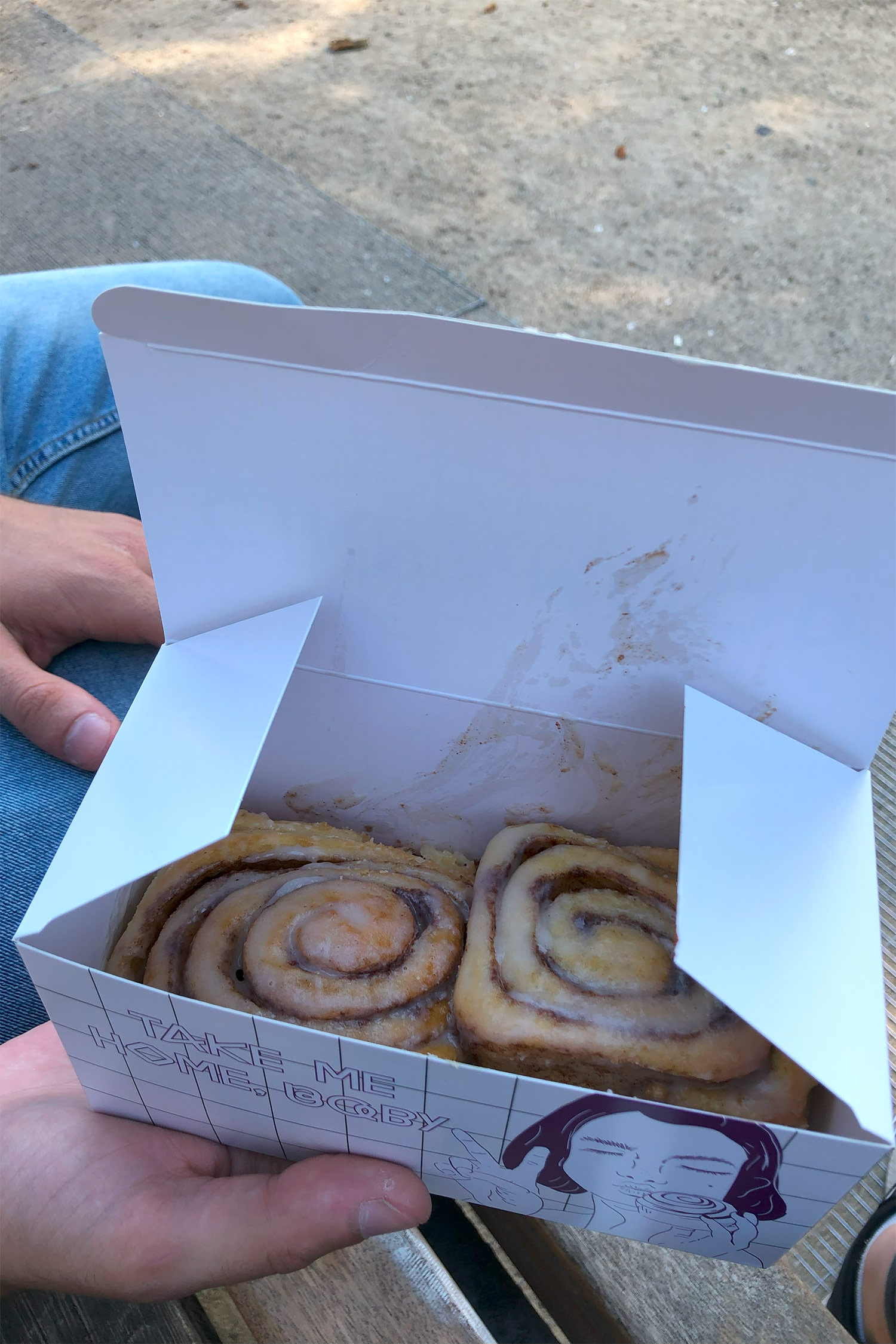

Day trips from Berlin
Berlin has lots to offer but if you are up to having a day trip away from the city, I can recommend visiting Potsdam, a city on the borders of Berlin that only takes under half an hour to get there by train. Potsdam is a very picturesque city since it was a residence of Prussian kings and German Emperor until 1918. What attracts most of the interest is Germany’s largest UNESCO World Heritage Site – palaces and parks that include Sanssouci Palace, Orangery Palace, Charlottenhof Palace, New Palace, and Cecilienhof Palace, to count a few. The city itself offers stunning views and the old part of the city is truly mesmerizing.
For a different experience, about 25 minutes away by train from Berlin, you can travel to the small town of Oranienburg to visit the Nazi concentration camp, called Sachsenhausen. In the years of 1936 and 1945, it was one of the largest concentration camps in Germany and it’s truly a devastating place to visit but so worth it to learn more about the history and pay respect to the victims. The territory is open to visitors for free and you can visit different buildings, read about the tragic events that happened over the years, learn about the people, and reflect on life, war, and humanity. Although it is a heartbreaking place, I highly recommend visiting to gain a deeper understanding and perspective on these past events.

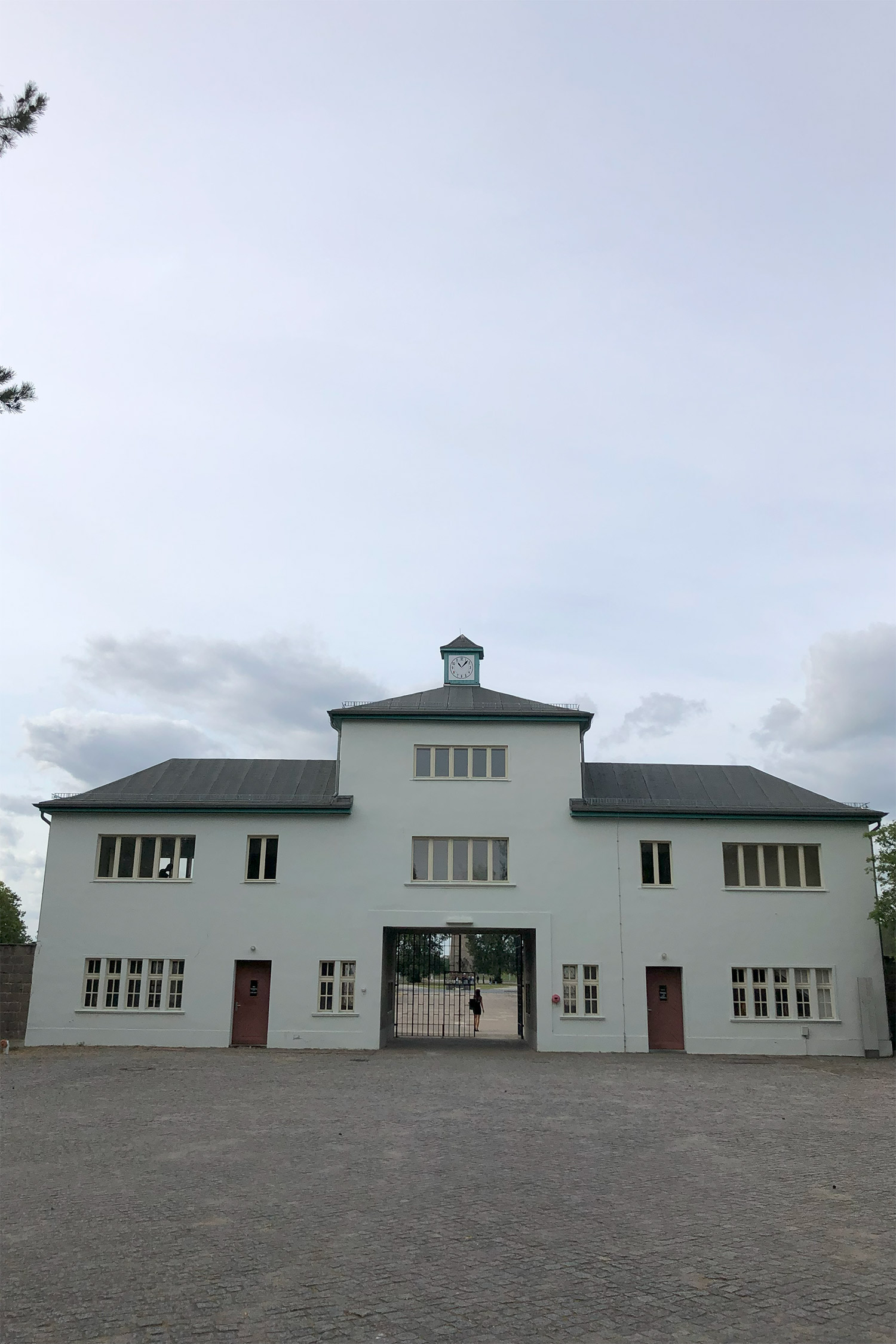

Final thoughts
It’s impossible to cover all the amazing and fun things to do and see in Berlin but I hope this guide at least covers some of the important and unique places. Berlin is one of my favorite cities that I have visited so far and I will definitely visit it again and again, there’s never enough time to experience it all! Comment below if you found this guide helpful and if you have any tips yourself, I’m always open to learning about new places and hidden spots!
Check out also other blog posts about Germany here!
Latest blog posts
- 8 Things to know about vanlife in the Netherlands
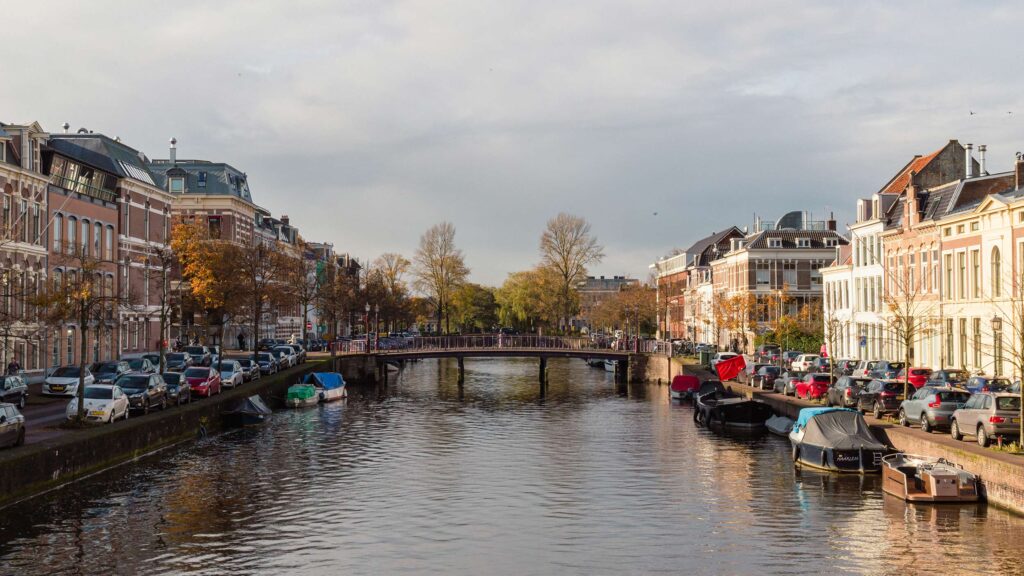
- Places to visit in Amsterdam on a budget-friendly trip

- Places to visit in Utrecht on a one-day budget-friendly trip

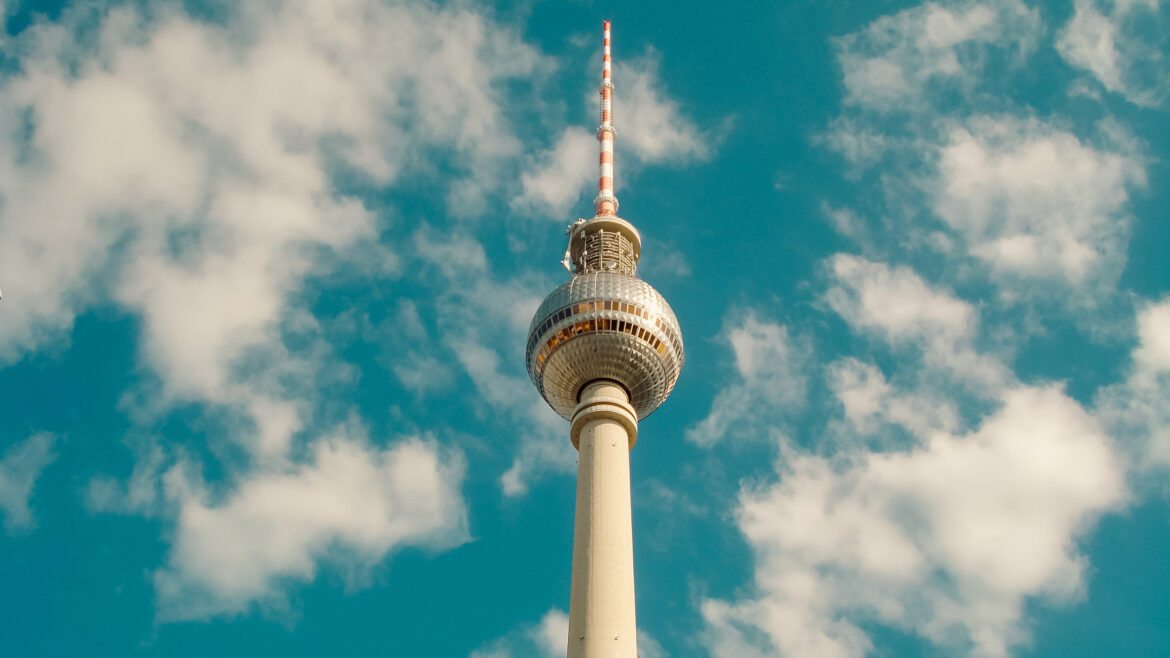
One response to “23 Places to visit in Berlin, Germany on a budget-friendly trip”
[…] a trip to Germany, make sure to check out my other blog posts about what places to visit in Berlin, and Dresden and what to know about vanlife […]